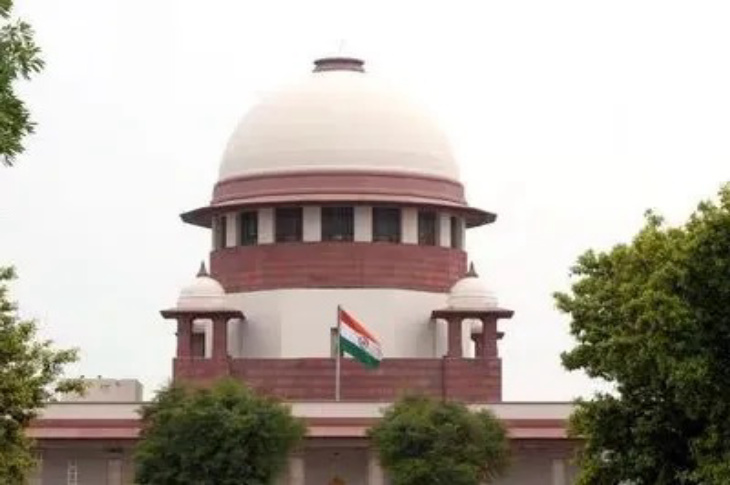Supreme Court's Landmark Verdict: Limits on Government Takeover of Private Property
In a significant and much-anticipated judgment, the Supreme Court of India has set new limits on the government's ability to take over private property for the "common good," signaling a shift in how the judiciary views the balance between private property rights and the government’s powers. This landmark verdict, delivered by a nine-judge Constitution bench, emphasizes that not all privately-owned properties can automatically be deemed as resources that the government may take over for the community. In an 8-1 majority, the bench clarified the constitutional boundaries and principles governing such takeovers, making this ruling a historic one for property rights in India.
Here's a breakdown of this important Supreme Court verdict, explaining its context, key observations, and implications.
Understanding the Background: Article 31C and Article 39B of the Constitution
To fully grasp the significance of this ruling, it’s essential to understand the constitutional articles that form the core of the case:
-
Article 31C - This provision protects laws made by the State to fulfill Directive Principles of State Policy (DPSP), which are non-justiciable guidelines in the Constitution intended to guide the government in shaping policies that serve the common good.
-
Article 39B - This Directive Principle mandates that the State should direct its policy to ensure the "ownership and control of the material resources of the community are so distributed as to best subserve the common good." In simpler terms, Article 39B implies that resources crucial for the community's welfare may be managed to prevent monopolization by private entities.
The debate arises around the interpretation of "material resources of the community." Can private property fall under this category, justifying the government's takeover for the common good? The court's recent verdict sheds light on this crucial question.
The Ruling: Key Observations and Separate Judgments
The nine-judge Constitution bench led by Chief Justice of India (CJI) DY Chandrachud delivered this verdict with an 8-1 majority. Three separate judgments were issued, reflecting varied perspectives among the judges on the bench.
1. Chief Justice DY Chandrachud’s Majority Opinion
The Chief Justice, speaking on behalf of himself and six other judges, clarified that while the term “material resources” in Article 39B can theoretically include privately-owned resources, not every privately-owned asset qualifies for this categorization. The judgment emphasized that an asset being privately owned does not automatically make it a community resource that the State can seize.
According to CJI Chandrachud, the determination of what constitutes a “material resource of the community” under Article 39B should be evaluated on a case-by-case basis. Several factors would come into play, such as:
-
The nature and characteristics of the resource.
-
The resource’s impact on the community’s well-being.
-
The scarcity of the resource and the consequences if it’s held by private entities.
-
Application of the “public trust doctrine,” which ensures that certain resources are preserved for public use.
In sum, CJI Chandrachud’s view established that only specific resources, which genuinely impact public welfare and cannot be left to private control, should be considered “material resources of the community.”
2. Justice BV Nagarathna’s Concurrent but Separate Opinion
Justice BV Nagarathna offered a slightly different perspective. She concurred with the judgment's overall direction but disagreed with certain observations made by the Chief Justice, particularly regarding past judicial interpretations.
In her separate judgment, Justice Nagarathna reflected on Justice Krishna Iyer’s famous dissent in the 1977 Rangareddy case, where he argued that both private and public resources could fall under the community’s “material resources” under Article 39B. She stressed that Justice Iyer’s opinion was rooted in the constitutional and economic context of that time, when socialist principles heavily influenced governance. This perspective, she argued, cannot simply be discarded or criticized because of the shifts in India’s economic policies after the 1991 liberalization.
Justice Nagarathna expressed concern about dismissing past interpretations, urging the judiciary to respect prior judgments’ contexts. She suggested that while economic policies evolve, historical judgments should not be disregarded based on current ideological shifts.
3. Justice Sudhanshu Dhulia’s Dissent
Justice Sudhanshu Dhulia issued the sole dissenting opinion, diverging from the majority. While specific details of his dissent weren’t widely covered, it likely involved a more expansive interpretation of “material resources,” possibly aligning more closely with Justice Iyer’s broader approach.
The Case that Led to This Landmark Verdict
This landmark ruling arose from a debate on the constitutionality of the government’s power to appropriate private property under Article 39B. The government’s role in taking over private assets was historically justified under the pretense of “public good,” but over time, private citizens began challenging the extent of this power, citing the right to property.
This case questioned whether the government could claim privately-owned properties as community resources under Article 39B simply because they fulfill a “material” or “social” need. The court’s judgment now draws a clearer line, ensuring the government’s reach does not encroach upon the constitutional rights of private property holders unless essential for public welfare.
The 1977 Rangareddy Case: Revisiting Justice Krishna Iyer’s Stand
The court’s recent judgment also revisits a major 1977 ruling, often referred to as the Rangareddy case, where a seven-judge bench ruled with a 4-3 majority that not all privately-owned property qualified as “material resources of the community.” Justice Krishna Iyer’s minority view in that case argued that both private and public resources could be considered community resources if they serve the greater good. His interpretation leaned towards the government having more expansive powers to regulate or take over private property.
The recent judgment, however, took a more restrictive approach, distinguishing that only specific, contest-specific criteria could make private property a community resource. CJI Chandrachud’s opinion emphasized that Justice Iyer’s perspective, while valuable, did not align with the current constitutional understanding.
Why This Judgment Matters: Implications and Impact
This landmark ruling represents a significant shift in India’s property law and the extent of government authority over private assets. Here are some key implications:
1. Strengthening Private Property Rights
By limiting the scope of government takeover of private property, the Supreme Court has reinforced private property rights. Property owners now have a stronger legal safeguard against the State seizing their assets under the pretense of public good unless specific, stringent criteria are met.
2. Refining the “Material Resources” Definition
The ruling introduces a nuanced definition of “material resources of the community,” which now must consider various factors like scarcity, community impact, and the public trust doctrine. This ensures that only genuinely essential resources fall under government control, reducing the likelihood of arbitrary property seizures.
3. Preserving Judicial Integrity and Respecting Historical Judgments
Justice Nagarathna’s concerns about disregarding past interpretations serve as a reminder of the judiciary’s responsibility to respect historical judgments and the unique socio-economic context in which they were made. Future judgments are encouraged to adopt this perspective, ensuring continuity and respect for the judicial legacy.
4. Setting a Precedent for Future Cases
This judgment will likely serve as a guiding precedent for future cases concerning property rights and government authority. With stricter criteria for government takeover, it may impact cases involving urban land acquisition, resource allocation, and disputes over community resources.
5. Balancing State Powers with Citizen Rights
The ruling carefully balances the State’s role in promoting public welfare with the rights of individual property owners. By adopting a selective approach to government authority, it acknowledges the importance of private ownership while allowing for intervention when genuinely needed.
Conclusion: A New Era for Property Rights in India
The Supreme Court’s landmark verdict on the limits of government takeover of private property marks a pivotal moment in India’s legal history. This judgment highlights the court’s commitment to protecting individual rights while considering the larger good. By restricting the government’s powers to seize private assets, it signals an era where private property rights are more robustly defended.
This ruling clarifies that the government’s right to regulate property for public benefit is not absolute and must meet strict criteria, emphasizing the value of individual rights and private ownership. The judgment also reflects the court’s evolving approach, recognizing past judgments while adapting to present needs.
This decision will likely resonate across India, shaping the legal landscape and offering stronger protections for private property owners.
Download the Judgment Here:
Supreme Court JudgmentTrending



Ask a Lawyer